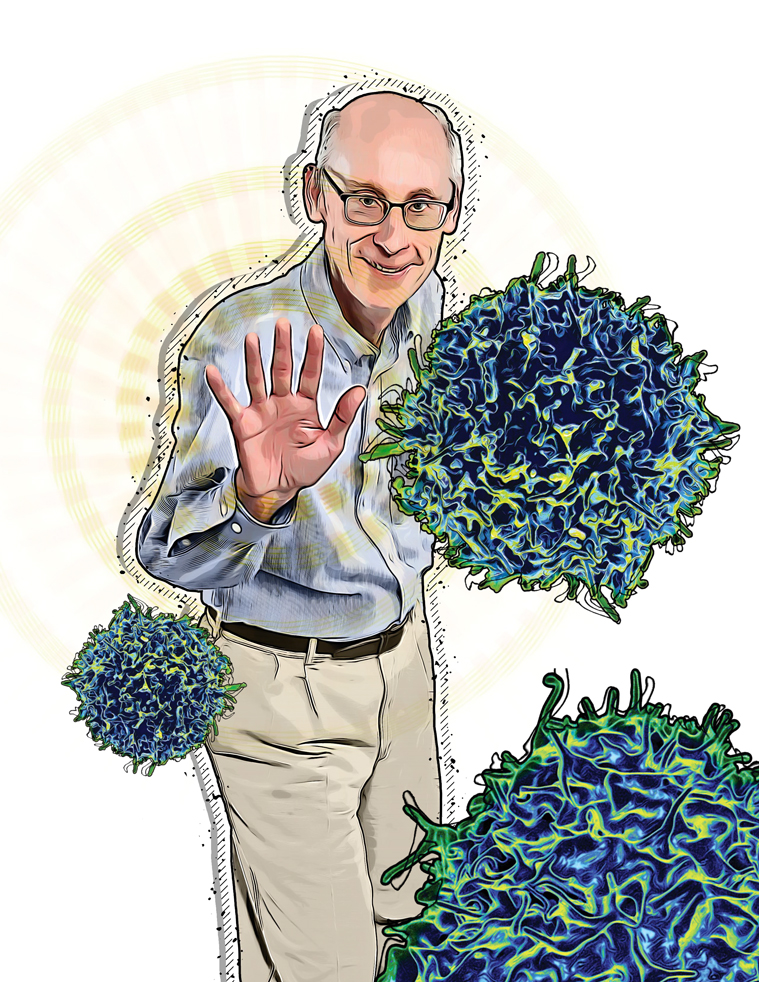Canceling Cancer With T Cells
Decoding Disease, Targeting Threats
Though modern science has eradicated countless threats to human health, many other diseases and degenerative conditions continue to take a devastating toll. How can we eliminate these threats to health and well-being?
Researchers in the University of Maryland’s College of Computer, Mathematical, and Natural Sciences (CMNS) fight relentlessly against diseases and conditions that claim countless lives and undermine ability, function and perception. These scientists are committed to finding answers by mapping complex neurological circuitry to better understand how the brain works and what happens when something goes wrong, tapping into the power of disease-fighting T cells to stop cancer in its tracks, and unraveling complex mechanisms to better understand and treat neurological impairments caused by aging and disease.
Grand challenges demand bold ideas and real-world solutions. In CMNS, we lead Fearlessly Forward.

“T cells can actually recognize and kill tumor cells,” explained Mariuzza, who has appointments in the Department of Cell Biology and Molecular Genetics (CBMG) and the Institute for Bioscience and Biotechnology Research (IBBR). “And this is going on all the time in our bodies because we’re constantly developing potential cancers. These T cells recognize cancerous cells using T cell receptors, which are proteins on the surface of T cells that can bind to proteins on tumor cells called tumor antigens.”
Harnessing the tumor-fighting power of T cells means first determining how they recognize certain cancers. In 2020, Mariuzza and his IBBR research colleagues—CBMG Associate Professor Brian Pierce and National Institute of Standards and Technology Research Chemist D. Travis Gallagher—published a study in the journal Nature Communications in which they identified key structural features of T cell receptors that bind to the tumor-specific proteins on cancer cells. In this research, Mariuzza’s team used state-of the-art biophysical methods including a complex process called X-ray crystallography to zero in on exactly how T cells target cancer.
“Crystallography is a way of determining the shape and atomic detail of proteins,” Mariuzza said. “We’ve done crystal structures of these anti-tumor T cell receptors in complex or bound to their tumor targets. So, we understand exactly at the molecular level how recognition is occurring.”
It’s critical information for the therapeutic challenges ahead.
“We’re laying the foundation—a database or a knowledge base—for clinical immunologists who are developing therapies that we hope will benefit from our work,” Mariuzza said.
“Cancers grow very rapidly and that’s one reason they can escape the immune system,” Mariuzza explained. “In these clinical trials, they take T cells from a patient with a cancer, isolate the T cells which are recognizing this cancer and they grow up these T cells in large amounts. Then they put large amounts of these T cells back into the patient which are numerous enough to target cancer cells and beat back the cancer.”
Supported by a $3.6 million grant from the National Institutes of Health, Mariuzza’s study of cancer-killing T cells continues. After more than 15 years in cancer research, he knows there’s much more work ahead, but he welcomes the challenge.
“You feel like you’re part of this gigantic enterprise attacking this major human problem,” Mariuzza explained. “Cancer immunotherapy will only improve going forward. It’s meaningful for me to be doing this kind of research.”
Written by Leslie Miller
This article was published in the Fall 2023 issue of Odyssey magazine. To read other stories from that issue, please visit go.umd.edu/odyssey.
Also from this issue:


